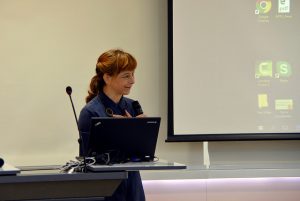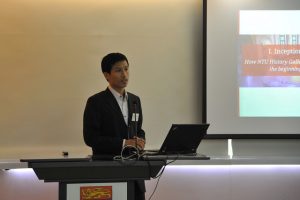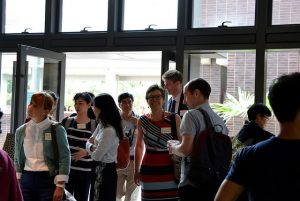APRU University Museums Research Symposium successfully navigates continuity and change
The National University of Singapore hosted the first-ever virtual APRU University Museums Research Symposium in November 2021, offering a valuable platform for the sharing of research and education initiatives for universities’ cultural and scientific collections. APRU thanks the NUS Museum, NUS Baba House, NUS Department of Architecture, and the NUS Global Relations Office for working collaboratively to host this multidisciplinary symposium.
Architectural heritage involves multidisciplinary perspectives and collaborations which demonstrate expertise in science, culture, and the environment. The numerous sub-themes of the symposium were developed to encourage participants from various related fields to discuss, debate and reflect on.
“Continuity and change have become crucial considerations when looking at our built environment and heritage buildings, as evident in recent examples of public health and climate concerns,” said Christopher Tremewan, APRU Secretary General, in his welcome address.
“This symposium is a key mobilisation opportunity for you to connect with others internationally in a common task, and with new tools to analyze artifacts and to make their collections available digitally, university museums are finding new ways to assist researchers and the public alike,” he added.
The symposium’s discussion on Intangible Cultural Heritage shed light on the preservation of the University of Melbourne’s Grainger Museum. As part of a university-wide digitization strategy, the University of Melbourne created digital 3D models of the building, its surroundings, and interiors, through the use of Lidar laser scanning.
“Through digital animation and storytelling, we express and make accessible the stories and histories of the collection and building,” said Rochus Urban Hinkel, an Associate Professor in Architecture and Design at the Melbourne School of Design, University of Melbourne.
On Architectural History the symposium delved into the study of history and architecture. The various sites presented in the oral papers, from the anatomical theatres of Padua to Singapore’s early tertiary institutions, revealed insights into momentous historical events, contexts, communities and actors, as well as national and political discourse.
Another panel on Urban Regeneration and Architectural Planning provided a glimpse into developments and new approaches that go beyond attending to specific buildings or monuments by featuring historical monuments that are a major part of Iranian culture and civilization.
On Sustainability and Conservation discussed energy efficiency in historic buildings, taking a close look at the role of the urban built heritage of Mumbai.
“The APRU University Museums Research Symposium provided us a chance to hear from the many universities that share common interests in the areas of architectural history and conversation and associated questions for cultures and communities,” said Ahmad Mashadi, Head of NUS Museum and NUS Baba House.
“We know many conversation methods, but conversation practice involves a lot of navigating, negotiating and social responses, so we still have much to learn through exchanges with our network,” he added.
More information about APRU University Museums Research Symposium 2021 and recordings at here.
January 5, 2022
more







